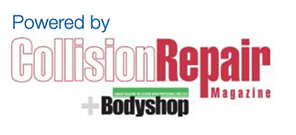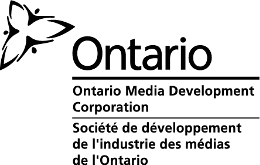The field of collision repair has undergone significant transformations in recent years, primarily driven by advancements in automotive technology and changing consumer expectations. Vehicles today are not just modes of transport; they are complex assemblies of sophisticated systems designed to enhance safety, efficiency, and comfort. This complexity has a direct impact on collision repair processes, necessitating a higher level of expertise and more advanced equipment than ever before. As electric vehicles (EVs) gain market share and advanced driver-assistance systems (ADAS) become standard features, the collision repair industry faces both challenges and opportunities. For consumers, understanding these trends is essential to navigating post-collision repairs, insurance claims, and ensuring their vehicles are returned to a safe and reliable state.
Calibration and ADAS
The calibration of a vehicle’s sensors and cameras is crucial after a collision. This process ensures that the ADAS—a suite of technologies designed to enhance vehicle safety and driving comfort—functions correctly. Proper calibration is essential for maintaining the vehicle’s safety features, such as automatic emergency braking, lane keeping assistance, and adaptive cruise control. Given the precision required, calibration and ADAS repairs highlight the need for specialized training and equipment in the collision repair industry.
EV Repair
Repairing electric vehicles introduces new challenges, including handling high-voltage systems and battery repairs. The requirement for specialized training is paramount, not just for safety but also to maintain the integrity of the vehicle’s complex systems. Certification plays a critical role here, signifying that a technician or repair shop has the necessary expertise and equipment to perform high-quality repairs on these advanced vehicles.
Repair Plans and Estimates
The distinction between a repair plan and an estimate is becoming increasingly important. A repair plan offers a comprehensive strategy for restoring a vehicle, including diagnostics and the calibration of safety systems, whereas an estimate provides a preliminary overview of the repair costs.
Paintless Dent Repair (PDR) and Hail Damage
Paintless Dent Repair (PDR) represents a significant advancement in repairing minor dents and hail damage without compromising the vehicle’s original paint job. This technique not only maintains the aesthetic appeal of the vehicle but also reduces repair times and costs, illustrating the industry’s move towards more efficient and less invasive repair methods.
The evolution of collision repair reflects broader trends in automotive technology and consumer protection. For vehicle owners, staying informed about these trends is crucial for making educated decisions in the aftermath of a collision, from selecting a qualified repair shop to understanding the nuances of insurance coverage and repair options.
Increased Use of Sustainable Materials and Practices
The collision repair industry is increasingly adopting sustainable materials and practices, reflecting a broader trend towards environmental responsibility. This includes the use of water-based paints, which reduce volatile organic compound (VOC) emissions, recycling parts and materials whenever possible, and employing energy-efficient technologies in repair shops.
Growing Importance of Cybersecurity
As vehicles become more connected, the cybersecurity of automotive systems is becoming a critical concern. Repair shops now need to ensure that vehicle software is up to date and secure from cyber threats, especially after repairs that involve the vehicle’s electronic systems or connectivity features.
Mobile Repair Services
The rise of mobile repair services is a trend catering to convenience and customer service. Mobile units can perform a range of services, from minor repairs to windshield replacements, at a location convenient for the customer, reducing downtime for vehicle owners.
Integration of 3D Printing
3D printing is gaining traction in the collision repair industry for its ability to produce parts on demand, reducing wait times for back-ordered parts and allowing for the customization of non-standard components. This technology can accelerate the repair process and potentially lower costs.
Digitalization and Customer Experience
Digital tools are transforming the customer experience in collision repair. Online estimates, digital walkthroughs of repairs, and real-time updates on repair status via apps or websites are becoming more common. These tools increase transparency and customer satisfaction while streamlining the repair process.
Insurance Telematics
Insurance companies are increasingly using telematics data to assess damage, determine fault in collisions, and streamline the claims process. This can lead to more accurate and faster claims processing but also requires repair shops to adapt to new data-driven approaches to repair assessments and documentation.
Adaptive Repair Techniques
As vehicles incorporate a mix of materials, including high-strength steel, aluminum, carbon fiber, and composites, repair techniques must adapt accordingly. Technicians require ongoing training to handle these materials properly, which can affect the repair strategy, tools, and time needed for repairs.
These trends highlight the dynamic nature of the collision repair industry and the need for repair shops, technicians, and consumers to stay informed about the latest developments and innovations. As the industry continues to evolve, staying ahead of these trends will be crucial for delivering safe, efficient, and high-quality repairs.
Futurecasting
Looking ahead, the collision repair industry is poised for significant changes driven by technological advancements, evolving consumer expectations, and regulatory developments. Here are some future trends we can expect to see in the next five years:
Autonomous Vehicle Repair Specialization
As autonomous vehicles (AVs) become more prevalent, specialized repair services catering to these high-tech vehicles will emerge. Repairing AVs will require not just mechanical expertise but also advanced knowledge in software, sensors, and system integration. Collision repair shops will need to invest in training and equipment to handle these complex systems.
Integration of Artificial Intelligence (AI) and Machine Learning
AI and machine learning technologies are expected to revolutionize the collision repair process by improving efficiency and accuracy. From automated damage assessment using AI-driven imaging technology to predictive analytics for parts management and repair scheduling, these technologies could streamline operations and enhance customer service.
Augmented Reality (AR) for Training and Repair Assistance
Augmented reality has the potential to transform training and repair processes in the collision repair industry. AR can provide technicians with real-time, overlay instructions for complex repairs, reducing errors and improving efficiency. It can also enhance training programs by allowing trainees to practice on virtual vehicles in a variety of scenarios.
Increase in Electric Vehicle (EV) Infrastructure
With the anticipated rise in EV ownership, there will be a corresponding need for repair shops equipped to handle EV-specific issues. This includes not only the repair and maintenance of EV components like batteries and electric motors but also the installation and maintenance of EV charging stations as part of the service offering.
Adoption of Blockchain for Parts Authentication and Warranty Management
Blockchain technology could be adopted to ensure the authenticity of parts and manage warranties more efficiently. By securely recording the origin and history of parts, blockchain can help prevent the use of counterfeit parts and streamline warranty claims, enhancing trust and transparency in the repair process.
Enhanced Safety Standards and Regulations
As vehicles become more complex, safety standards and regulations governing their repair will likely become more stringent. This could include mandatory certifications for technicians working on specific systems, such as ADAS or EVs, and increased oversight of repair processes to ensure compliance with safety and environmental regulations.
Shift Toward Preventative Maintenance and Repair
With the growth of connected vehicles and telematics, there will be a greater emphasis on preventative maintenance and predictive repair. Vehicles will be able to alert owners and repair shops of potential issues before they become major problems, potentially reducing the need for extensive repairs after collisions.
Customization and Personalization Services
As consumers seek to differentiate their vehicles, customization and personalization services may become a more significant part of the collision repair industry’s offerings. This could range from custom paint jobs and wraps to the installation of aftermarket parts and accessories.
These future trends underscore the importance of continuous learning and adaptation for professionals in the collision repair industry. Staying abreast of technological advancements and changing consumer preferences will be essential for businesses to remain competitive and meet the evolving needs of vehicle owners.


